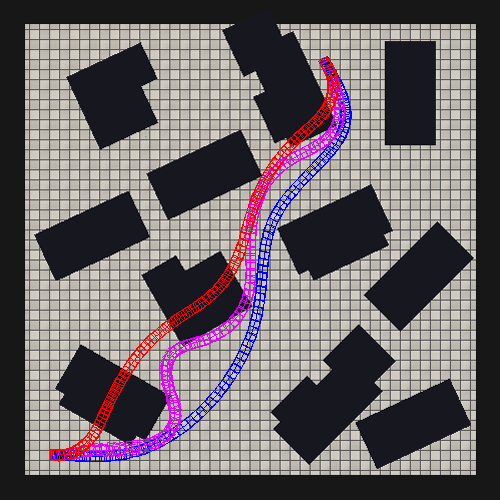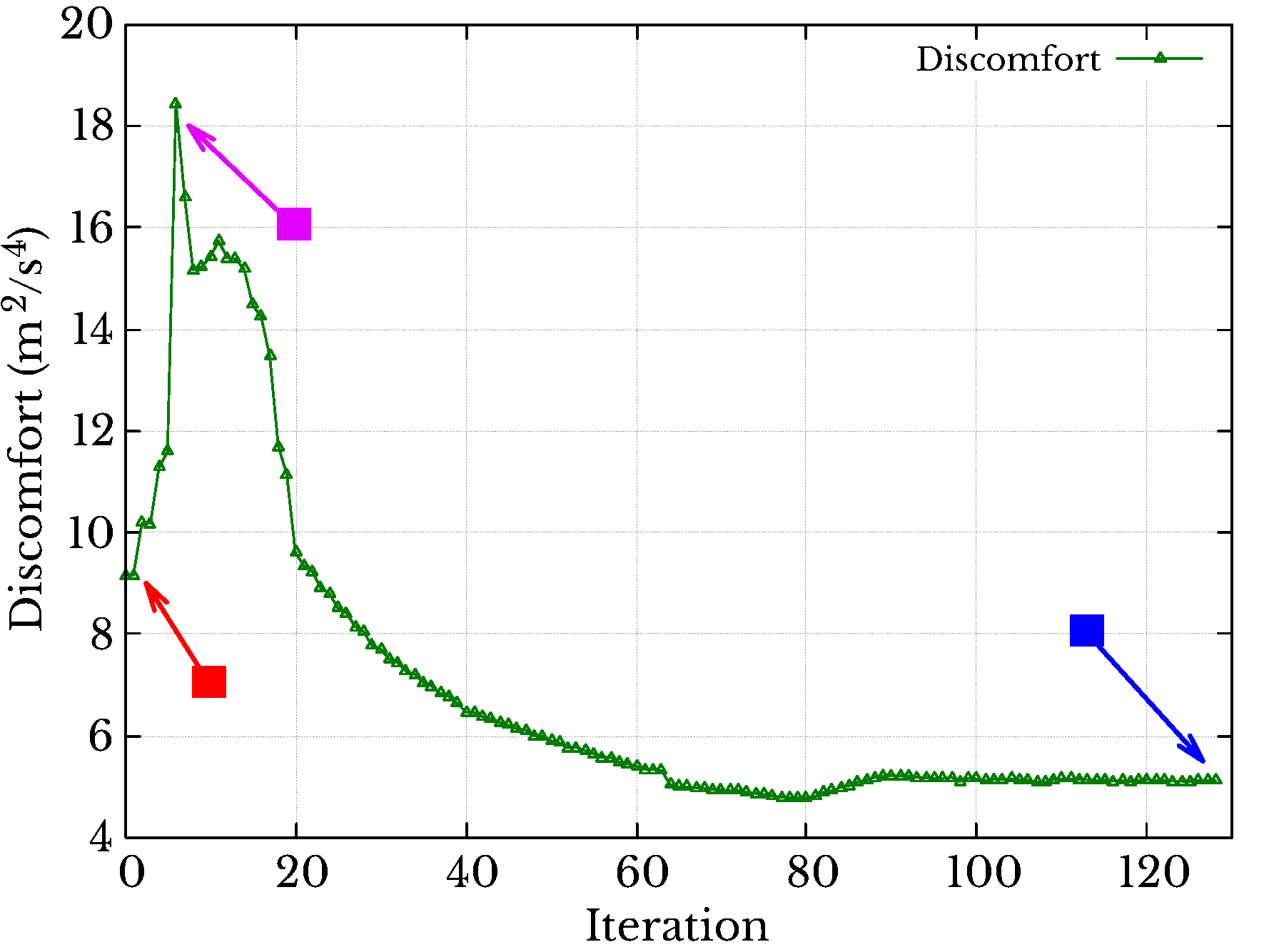 |
 |

IEEE/RSJ International Conference on Intelligent Robots and Systems (IROS) 2018
by Heechan Shin , Donghyuk Kim and Sung-Eui Yoon
Korea Advanced Institute of Science and Technology (KAIST)
In this work, our goal was propose how to generate trajectory which has comfort property. By doing so, we defined new definition of 'comfort' and suggest how to generate the trajectory with it. Additionally, we propose a novel method of measuring obstacle cost, which improves optimizing the trajectory w.r.t. comfort.




Abstract
As personal autonomous mobility is getting to be more widely adopted, it is more important to consider comfortability of stuffs and persons carried by such mobility. In this work, we define the comfort of a trajectory as forces, specifically, translational force, received to objects carried by a robot while following the trajectory by measuring impulse. To maximize such a comfort, we propose a novel, kinodynamic comfort path planning method based on our definition of comfort. Our work is based on direct collocation method for handling our nonconvex objective function. We also introduce Bidirectional Obstacle Detection(BOD) that identifies the distances along the perpendicular directions to the trajectory. This is mainly designed for avoiding obstacles while minimizing forces causing discomfort. Our experimental results show that our method can compute trajectories whose comfort measures can be up to 18 times higher than those computed by prior related objectives, e.g., squared velocity used for generating smooth trajectory.
VIDEO
| Experimental result (1 Min) | Spotlight talk (3 Min, pre-recorded) |
Contents
Paper (author preprint / pdf / 1.6MiB)Source code: ZIP file, github
Spotlight slides (pptx / 10.5MiB)